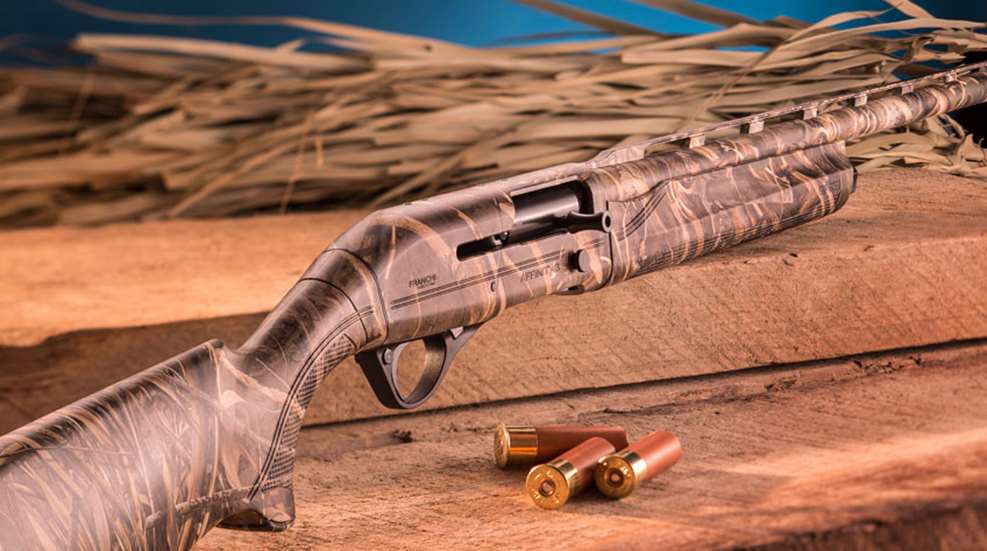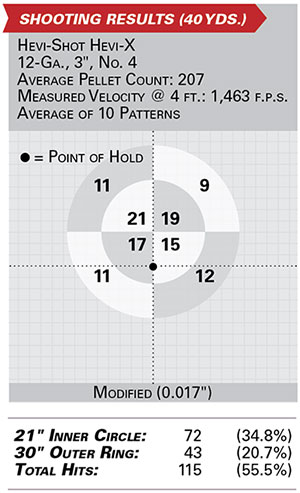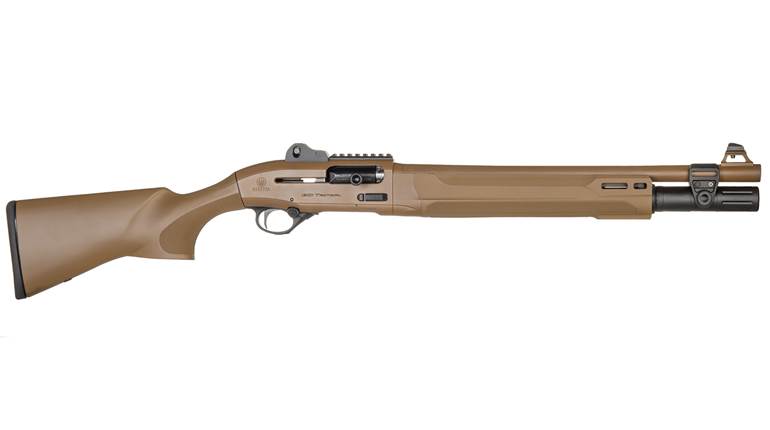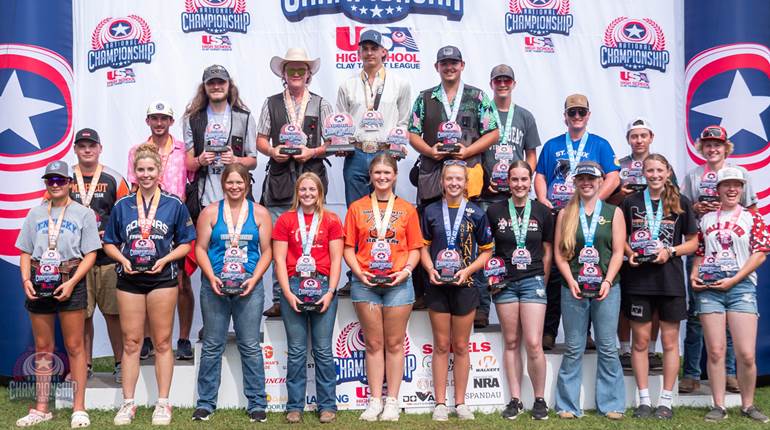
It might seem strange at first for Franchi to name a shotgun “Affinity,” but in the broad sense of the word, a natural liking for something, it fits. Simply put, it’s an easy shotgun to shoot and shoot well. The Affinity uses the now-familiar inertia operating system brought to prominence by its stablemate the Benelli Black Eagle and its iterations, and also shared with its more affordably priced bedfellow, the Stoeger 3000. Interestingly enough, the inertia system was the 1903 brainchild of Danish gunsmith Christian Sjörgren when he first marketed his “Normal” semi-automatic design.

Our sample gun was a 28"-barreled 12 gauge chambered for 3" shells—the company also makes a 3½" chambering, but given the added punishment those shells produce, the 3" version will get the job done equally well. The inertia-driven operating system works by means of a rotating bolt head that is held in battery by a strong spring. When fired, the gun recoils, but the spring, supported by the mass of the bolt, is further compressed, which tightens the engagement of the bolt head with the cuts in the barrel extension. Once the ejecta leaves the muzzle, the spring tension relaxes and the bolt is then freed to move rearward, extracting the fired shell and ejecting it as it reaches the ejector at the rear of the barrel extension. If there is no round in the tubular magazine, the bolt is locked to the rear. If there is a fresh round available, it is released, tripping the action release and, as the bolt travels forward—powered by the return spring that is wrapped around the magazine tube rather than concealed within the buttstock—pivoting the carrier up to place the new cartridge in front of the bolt. The forward-traveling bolt then pushes it into the chamber with the extractor snapping over the rim of the shell.
The Affinity comes with a set of stock adjustment shims so that users can customize fit and length of pull. At the 16-yd. fitting plate we found that it shot about 1" high, just right for keeping game or clay visible over the rib. In the event it was off, the easy-to-follow directions show how the shims are employed, facilitating fitting the gun to the individual. The Affinity 3 features a red fiber-optic front bead, and the top of the aluminum receiver is drilled and tapped for the mounting of an optic.

We had the opportunity to shoot the Affinity for several days while hunting Maryland’s Eastern Shore geese, and it didn’t disappoint. In the field, we used a combination of Hevi-Shot Hevi-X, B&P Magnum, Winchester Blind Side, Federal Premium Black Cloud and Kent Bismuth. We shot each ammunition type individually, and also mixed them together randomly, again without a malfunction. The shots taken at the fitting plate were 7/8-oz. Rio light target loads, which the Affinity cycled without a hitch. The average trigger pull was 5 lbs., 8 ozs.—fairly light for a semi-automatic.
 Our test gun came with a Realtree Max-5 dipped camouflage finish. This type of finish provides excellent protection against the elements, plus concealment from the birds’ eyes. Standard with the Affinity is an extra-large bolt handle that extends a full 11⁄8" from the side of the action. So, too, the bolt release is a nearly 1/2"-wide button for fumble-free operation, as is the trigger guard, which is large enough to accommodate winter gloves. The crossbolt safety, located at the back of the trigger guard, is smallish compared with the other operating controls, but we found it to be no impediment in the field. At the right-front-top of the trigger guard is a small serrated tab that must be depressed in order to lock the bolt open. The magazine loading port is also enlarged to facilitate loading. The Affinity’s magazine has a capacity of four shells, but comes with the mandatory-for-hunting plug to reduce the capacity to two. Loading the magazine was a little harder than most, as the shell latch’s spring is fairly strong, and must be overcome with a harder-than-usual push.
Our test gun came with a Realtree Max-5 dipped camouflage finish. This type of finish provides excellent protection against the elements, plus concealment from the birds’ eyes. Standard with the Affinity is an extra-large bolt handle that extends a full 11⁄8" from the side of the action. So, too, the bolt release is a nearly 1/2"-wide button for fumble-free operation, as is the trigger guard, which is large enough to accommodate winter gloves. The crossbolt safety, located at the back of the trigger guard, is smallish compared with the other operating controls, but we found it to be no impediment in the field. At the right-front-top of the trigger guard is a small serrated tab that must be depressed in order to lock the bolt open. The magazine loading port is also enlarged to facilitate loading. The Affinity’s magazine has a capacity of four shells, but comes with the mandatory-for-hunting plug to reduce the capacity to two. Loading the magazine was a little harder than most, as the shell latch’s spring is fairly strong, and must be overcome with a harder-than-usual push.
The synthetic stock terminates in Franchi’s TSA recoil pad that does an excellent job of attenuating recoil. It has a slick heel to help with a smooth gun mount and horizontal striations across the center of the pad to stabilize it against the shoulder once mounted. However, in shooting it extensively, we found it had the tendency to slip on a variety of hunting coats, necessitating a remount for second and third shots.
The bore of our test gun measured 0.719" with a digital bore micrometer—rather on the tight side—but close to the SAAMI standard of 0.725". The three included choke tubes, marked IC (0.0045"), M (0.017") and F (0.0315") hued fairly close to standard measurements against the cylinder bore. We used the modified tube for geese and ducks with excellent results. The 40-yd. patterning results are right on at 55 percent, as the 0.017" choke constriction lies right between Light Modified (0.015") and Modified (0.020"). We shot 10 patterns using Environ-metal’s (Hevi-Shot) new Hevi-X No. 4 ammunition. Our test loads contained 207 pellets that provided quite even patterns. The results are tabulated nearby.
In total, we found the Affinity to be a really endearing shotgun that performed to perfection in the field, as it was easy to shoot well in terms of birds bagged relative to shots fired. Perhaps the best news is the suggested retail price of $899 for the camouflaged and walnut models, and $789 for the black version—with at-the-counter prices potentially lower.







































